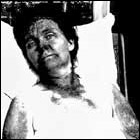|
|
 |
|
Goldberger
vs. The South
If
poor diet resulting from poverty among Southern tenant farmers and mill
workers was the root cause of pellagra, then the only real cure was social
reform, especially changes in the land tenure system. A dramatic drop
in cotton prices in 1920 and the attendant decrease in the income of
many Southerners occasioned a spike in the number of reported pellagra
cases. Goldberger publicly predicted dire public health consequences
for 1921 when there might be as many as 100,000 pellagra cases including
10,000 deaths and even worse for 1922.
Newspaper headlines warning of famine and plague in the South caught
the eye of President Warren G. Harding, who asked Surgeon General Hugh
Cumming for a report and was supportive of PHS appeals for an increased
budget for hospitalization and supplies. The Public Health Service
called upon Southerners to provide local relief for the poor. However,
the response of many in the South was the opposite of grateful and
magnanimous. Enraged Southerners, led by South Carolina Congressman
Jimmy Byrnes, denounced the negative characterization of their region
and feared that it would discourage economic investment and tourism
in the South. They believed that Southern pride and Southern prosperity
were on the line.
Goldberger proved correct. There was a dramatic increase in pellagra
and in the number of deaths, although not quite as many as he had predicted.
The land reform that Goldberger believed necessary to eliminate pellagra
was accomplished not by scientific reasoning but by the invasion of
boll weevils. The insect destroyed cotton fields and forced Southerners
to diversify their crops. By growing more food crops, Southerners improved
their diets and suffered less from pellagra.
The Great Mississippi Flood
During the 1920s, Goldberger continued research to identify what he
called the "pellagra preventive factor." He learned that
small amount of dried brewer's yeast prevented the disease as effectively
and more cheaply than fresh, lean meat, milk, and vegetables. He also
began laboratory experiments on dogs after learning that black tongue
disease was the canine equivalent of pellagra. When the Mississippi
River overflowed its banks in 1927, Goldberger returned to the field
with PHS statistician Edgar Sydenstricker. Together they traveled the
Mississippi valley collecting statistical data on every aspect of Southern
life for their epidemiological studies while delivering jeremiads against
the system that left the poor too destitute to eat a healthy diet.
The message was unwelcome and unheeded.
Back To Top | Photography Credits
|
|
 |
| Woman suffering from Pellagra |
| |
| |
| |
|
 |

